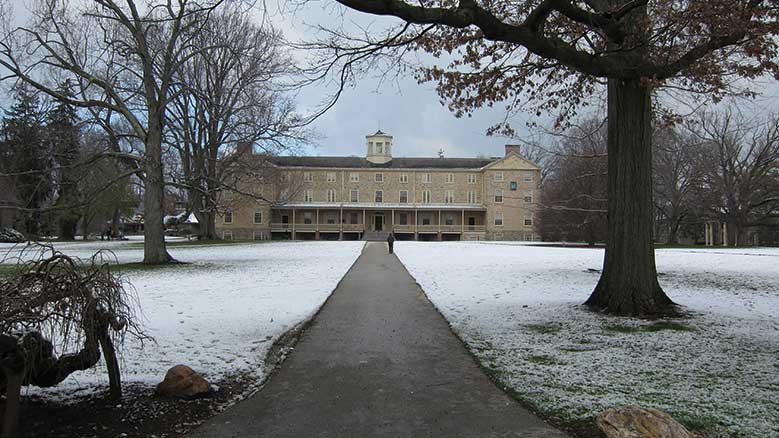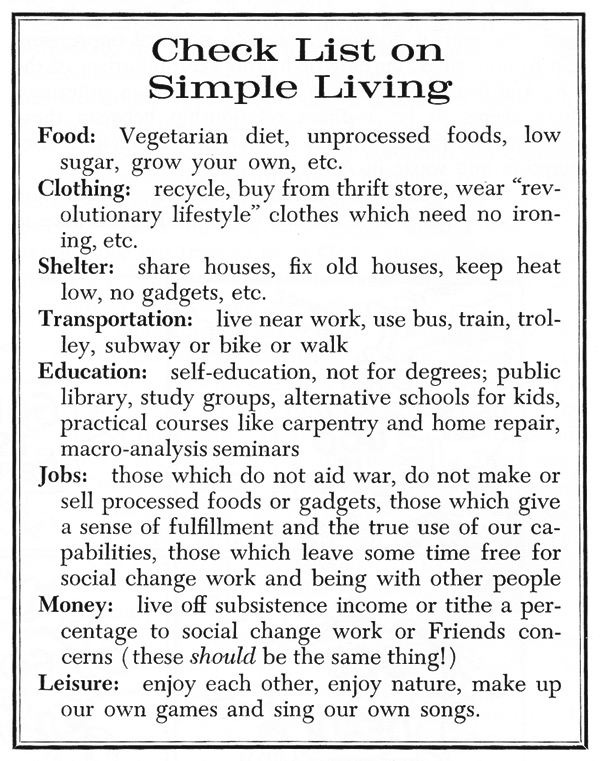A number of years ago, while teaching at Harvard Divinity School, Henry Cadbury encountered a distraught former student who had become a minister in a church that was deeply divided over certain theological issues. He wanted to know how to address his congregation on Sunday mornings, and Henry Cadbury advised him to "preach where their circles intersect."
At one level or another, Friends often appear not to agree, even about the most basic matters. We have a Testimony of Simplicity, for example. Some Friends deliberately restrict their income, some avoid driving large cars, while some do not drive at all. Other Friends live in large houses and drive SUVs.
We have a Testimony of Equality. For some Friends gender-specific language is eschewed, along with titles and other remnants of class differences. Others work in hierarchical businesses, live in exclusive neighborhoods, and send their children to elite schools. While we place great emphasis on our corporate discernment and witness, we also recognize that the pursuit of truth requires each individual to walk his or her own path in living the testimonies of Friends.
So what can be done when, inevitably, Friends differ in their perception of truth? A starting point, as Henry Cadbury observed, is to speak to the common ground, where the circles intersect. Let us take a look at those circles.

Here we have the most basic of intersecting circles: the beliefs, experiences, theories, discernments, notions, and truths of "thee" and "me." As with any pair of individuals, much of each person’s experience is unique to that individual (the darker part of each circle in the diagram), but a certain portion is shared with the other (the lighter part).
It is tempting to think that "truth" is to be found where the circles intersect, but that is not necessarily so. The only thing true about the intersection is that the two people agree on that part of their experience. Perhaps they have the same opinion about skyscrapers. They may both be right, or they may both be wrong. The only assurance is that they agree.
It is also tempting to think that, if you add more people to the mix and you find the intersection for most of their circles, then you stand a greater chance of finding truth there. That, of course, is a foundation of democracy: wisdom resides in the majority. The odds are probably in favor of this view, but, again, it is not necessarily so. One need only consider the history of science to see, again and again, how the majority of thinkers, working from faulty premises or incomplete observations, were certain of one fallacy or another. Or consider the history of civil life to see, over and over, how an entrenched majority can reject the truth of a marginalized minority.
However, the truth that we Quakers seek does not involve just more and more human circles, and we do not rely on hu-man standards to define truth, for the truth we seek is God’s presence in our lives. So let us add that important third circle.

In looking at these drawings (known as Venn diagrams), it is important not to get caught up on the size of each circle, or the size and shape of each section of the circle. These circles simply identify areas of overlap; they do not map them. Obviously, God’s circle of experience would dwarf any human circle to insignificance, and it is absurd to think that any person knows as great a proportion of God as God knows of that person.
There is, of course, much that we do not know of God. However, that which we can discover and experience of God is the object of Quaker discernment. That is what we seek to commune with in our worship, what we strive to serve in our business meetings, what we simplify our lives to focus upon. In Quaker faith and practice, concordance with God is our yardstick for truth.
Therefore, does that mean that we must seek and focus solely upon the bright triangle at the core of our diagram? No. Not at all. For truth does not reside only there.
Consider some specific parts of the diagram. The area shared by thee and me now has two parts, labeled 2 and 3. Part 3 is shared not only by thee and me, but also by God. Truth resides in part 3, not because of thee or me, but because of God. However, thee knows something of God that is not shared by me, and vice versa (the parts labeled 4). Truth resides also in those parts, because of God.

If thee focuses only on the measure of God that is shared with me (part 3), then thee ignores the portion of truth that is unique to thy own experience of God. If thee takes a step forward and accepts thy full experience of God (part 3 and thy own part 4), then thee still fails to appreciate the unique experience of God by me (the other part 4). But what if thee takes one more step, and accepts the experience of God by me?
This is the genius and the challenge of Quaker corporate discernment, the reason we do not operate by majority rule, and the reason we treasure diversity. We gain a fuller sense of God when we can answer that of God in one another, when we can accept as genuine what others experience of God, even if we do not experience it ourselves.
This is particularly a challenge when it comes to the Peace Testimony. Some Friends are led to be strict pacifists and take a stand that they would not use force even to protect their home and family. The history of the Religious Society of Friends has been one of courageous moral witnessing. In nearly every war in modern times there has been a small but persistent Light that has shone, a testimony to a better way of settling differences. On occasion the results of this witnessing have been remarkable. One can only imagine that the Vietnam conflict would have continued much longer without the voice of Quakers, and others, registering their opposition.
Other Friends, however, have been led in other directions. In every war, Friends have nursed soldiers to health or eased their dying, have labored to provide food and materials to those who fight, have themselves fought, and have commanded fighters. Indeed, it is the rare Quaker who can make even an approximate claim to be free of supporting war in any way. And there is no Quaker in this country who does not benefit from the privilege—and suffer the burdens—that the United States derives from its military.
Each Quaker—indeed, each person—needs to be true to one’s own measure of the Light. However, claiming that responsibility for one’s self also requires accepting it in others. Together, each being true to the Spirit, we all draw closer to it even if we cannot claim to walk the same path. To this end pacifists and nonpacifists can work together, both within and outside of the Religious Society of Friends. Only then will we fulfill the Peace Testimony and truly move toward peace.




